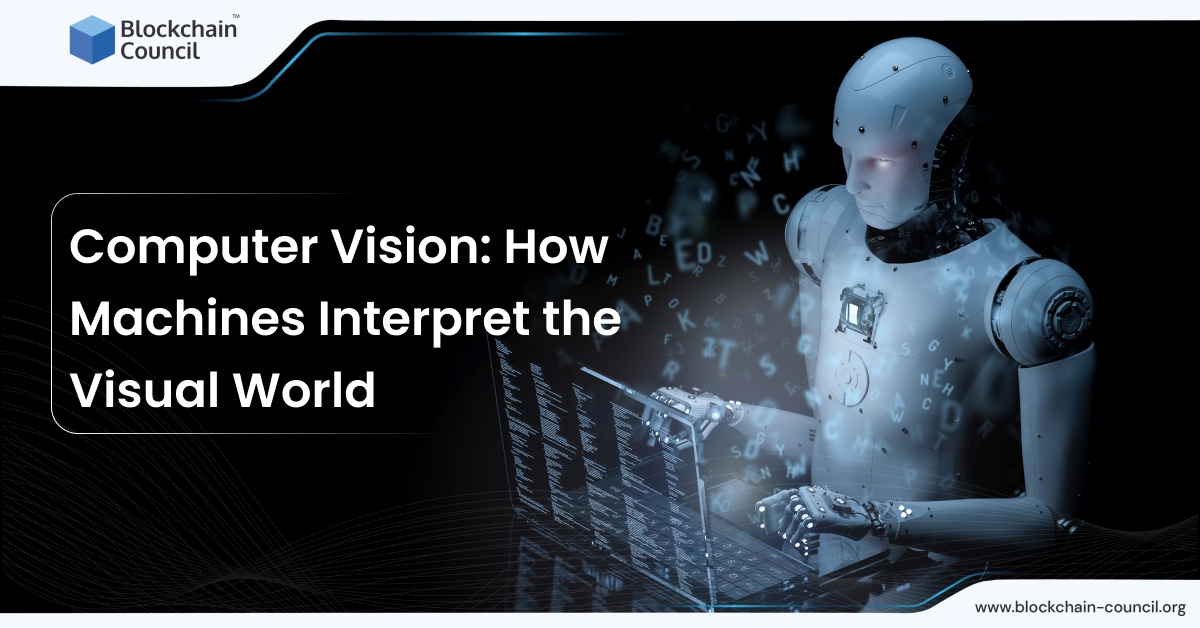A domain within artificial intelligence (AI), computer vision empowers machines to comprehend and interpret the visual environment. It simulates human vision by enabling computers to extract, analyze, and interpret information from images and videos. Facial recognition systems and autonomous vehicles are just two examples of the numerous industries that computer vision is transforming and propelling significant advances in AI technology.
Comprehension of Computer Vision
Computer vision processes visual data at its foundation using complex algorithms and deep learning models. These algorithms facilitate the ability of machines to identify patterns, objects, and gestures that are present in images or videos. By utilizing convolutional neural networks (CNNs), specifically neural networks, computers are capable of acquiring the ability to discern and categorize objects with exceptional precision. The scope and variety of computer vision applications are extensive. It is utilized in the healthcare industry for medical imaging analysis, which permits the early detection of cancer and other diseases. Computer vision is the primary force behind autonomous vehicles in the automotive industry, enabling them to navigate roads and detect obstacles. It is utilized in the retail industry for consumer analytics and inventory management. Moreover, security and surveillance systems employ computer vision to analyze behavior and recognize faces.
Challenges in Computer Vision
Despite substantial advancements, computer vision continues to face numerous obstacles. A significant challenge lies in the requirement for extensive annotated datasets to effectively train models. The process of obtaining and annotating these datasets can be both laborious and costly. An additional obstacle that arises is the computational intricacy of deep learning models, which may necessitate significant computing resources for both training and inference processes. A growing concern is also the protection of the confidentiality and integrity of data utilized by computer vision systems.
Computer Vision and Augmented Reality
Frequently employing computer vision to interpret and interact with the user's circumstances, augmented reality (AR) fuses computer-generated content with the physical environment. AR applications seamlessly superimpose digital information over objects in real-time by utilizing computer vision. This technology is implemented in various sectors such as industrial design, gaming, and navigation, among others, to augment user experiences and facilitate novel forms of interaction.
3D Reconstruction and Computer Vision
Three-dimensional reconstruction is another application of computer vision in which multiple images of an object or scene are utilized to generate a model in three dimensions. This method is implemented in virtual reality, architecture, and archaeology, among other disciplines. Computer vision facilitates intricate examination and representation of environments and structures by reconstructing three-dimensional models from two-dimensional images.
Computer Vision and Remote Sensing
Computer vision is utilized in remote sensing to analyze images obtained by drones, satellites, or other remote sensing platforms. Monitoring environmental changes such as deforestation, urbanization, and natural disasters requires this technology. Computer vision processes remote sensing images in order to extract valuable information that aids in the conservation of the environment and the administration of disasters.
Creativity and Art in Computer Vision
Computer vision transcends pragmatic implementations and encompasses the domains of artistic expression and ingenuity. By utilizing computer vision techniques, designers and artists produce interactive installations, digital artworks, and visual effects for video games and films. Computer vision is challenging the limits of conventional artistic expression, thereby altering our perception and appreciation of art.
Computer-Human Interaction
Human-computer interaction (HCI) represents an additional noteworthy deployment of computer vision. Computer vision enriches user engagement with devices and applications by empowering computers to interpret body language, facial expressions, and gestures. By enhancing the user experience and accessibility of virtual reality systems, smart cameras, and healthcare applications, this technology is put to use.
As the prevalence of computer vision technologies increases, ethical concerns emerge as a paramount concern. Concerns such as algorithmic bias, privacy invasion, and employment repercussions give rise to significant inquiries. It is imperative that computer vision researchers and developers address these ethical concerns and ensure the responsible development and deployment of their technologies.
Future Directions
With optimism, the future of computer vision appears to be bright. Promising developments in domains including unsupervised learning, meta-learning, and few-shot learning have the capacity to significantly enhance the efficacy and performance of computer vision systems. The combination of computer vision with other artificial intelligence (AI) technologies, including robotics and natural language processing, can also result in the development of more intelligent and self-governing systems.
Notwithstanding its progress, computer vision continues to encounter obstacles. Robustness to variations in illumination, viewpoint, and occlusions constitutes a significant obstacle. Additionally, efforts are being made by researchers to enhance the explainability and interpretability of computer vision models. The incorporation of additional sensory modalities, such as audio and depth sensors, into computer vision in the future will enable the development of more holistic and context-aware systems.
Training and Certification in AI for Computer Vision
The increasing need for proficient computer vision professionals necessitates the development of specialized training and certification programs. Prompt engineer certification, generative AI certification, and AI developer certification are courses that aim to furnish participants with the requisite expertise and competencies to thrive in this domain. In addition to image processing, neural networks, and deep learning, these courses provide a comprehensive understanding of computer vision techniques and principles.
Conclusion
The way in which humans and machines interact is being revolutionized by computer vision, which empowers machines to perceive and comprehend the visual world in unprecedented ways. As AI and deep learning continue to advance, the potential applications of computer vision are virtually limitless. Through the implementation of AI certification and training programs, individuals have the opportunity to acquire advanced skills in this dynamic domain and make valuable contributions to the advancement of inventive solutions that capitalize on the capabilities of computer vision. The domain of computer vision encompasses a wide range of implications and applications. Computer vision persists in pushing the limits of innovation, as evidenced by its contributions to environmental monitoring via remote sensing and the enhancement of user experiences in augmented reality. In the ongoing development of the field, individuals who possess computer vision training and AI certifications will be instrumental in propelling its progress and capitalizing on its complete capabilities for the betterment of society.


No comments yet